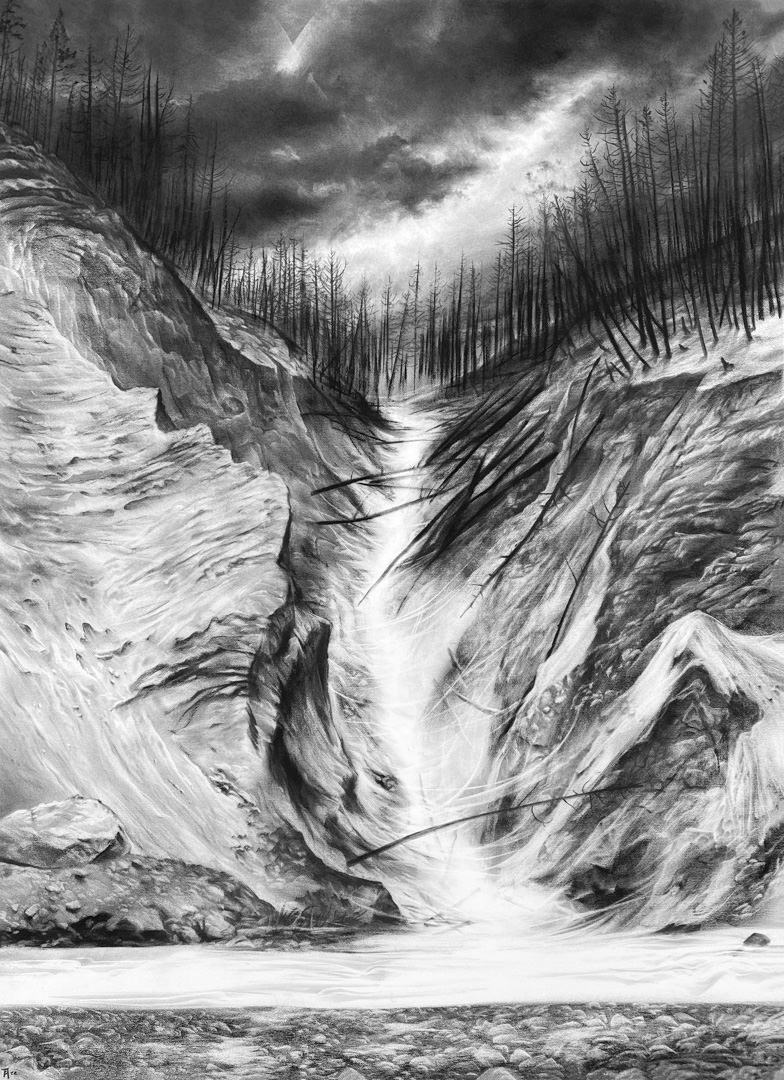For years now, local authorities have been sounding the alarm over the very real possibility of a wildfire tearing through the resort. I can still hear Councillor Arthur De Jong’s words echoing in my head, a warning he has reiterated more than once:
“It’s not a matter of if, but when.”
It’s a sobering message, particularly in light of our ever-worsening fire seasons, and the numerous examples of major wildfires devastating entire communities, be it Fort McMurray, Lytton, Kelowna—you name it. These catastrophic events are now such a fixture of Canadian summers that it’s easy to become desensitized to them. I still remember the summer of 2015 when Whistler was choked for days on end by smoke drifting in from the nearby Elaho and Boulder Creek fires, leading Environment Canada to issue the highest air-quality rating it has. Walking around town, you could sense a palpable dread in the air, along with the sharp, acrid smoke. It didn’t help the thick haze blanketing our idyllic mountain town lent it a sort of surreal, dystopian feel (“It’s like Beijing,” one visitor told The National Post).Several years and dozens of wildfires later, and smoky skies are as much a part of Whistler summers as bear sightings and patio après sessions.
So, how to cut through the indifference and inspire meaningful action? It’s a dilemma fire chiefs, government officials, emergency planners, climatologists and beyond have been wrestling with for ages. It’s only human nature that, at a certain point, the constant barrage of doom-and-gloom statistics about another worst wildfire season on record, or the harrowing footage of thousands of people fleeing their homes, would get to be too much. Numerous studies have been conducted on the rise of so-called “climate anxiety” in society. Researchers from the Mental Health and Climate Change Alliance released a study that found that British Columbia’s 2021 heat dome sparked a 13-per-cent increase in anxiety related to climate change. The effect is more pronounced among younger demographics. A more recent study out of Lakehead University found that 78 per cent of the 1,000 Canadians aged 16 to 25 polled said that climate change impacted their overall mental health, while 40 per cent said their feelings around climate change negatively affects their daily life.
Research also shows how important productive messaging is to keep the public informed, without leaving people in a state of fear and paralysis, something that I’ll admit the media hasn’t historically done a great job of.
It’s a phenomenon the Resort Municipality of Whistler (RMOW) and local fire department are well aware of, and, especially in these last few wildfire-ravaged years, have looked at new ways to engage the community on fire-proofing their neighborhoods and properties. Relatively speaking, Whistler has one of the most comprehensive fire resilience and emergency preparedness programs around. Whistler’s FireSmart program, which offers a number of ways for local residents and businesses to fire-proof their properties, has seen considerable pickup in recent years. But as Whistler Fire Chief Thomas Doherty rightly told Pique this week (see page 14): there is still much work to do, and it can’t and shouldn’t rest on the shoulders of the RMOW and Whistler Fire Rescue Service alone.
The RMOW took an interesting approach to the issue last June when it hosted an event at the library that I had the good fortune to moderate, called Fire Season: Collective Sense-Making Around Wildfires. The event was inspired by a project by a pair of B.C.-based artists, Liz Toohey-Wiese and Amory Abbott, who have published two editions (with a third on the way this summer) of Fire Season, which collect visual art, poetry, writing and essays that “look at wildfires as a container for more complex and experiential topics like grief, climate change, loss, new growth, renewal, changing ideas of landscape, resilience, economy, and resource extraction.”
The remarkable thing about these books—besides they’re stunning, otherwordly imagery and exquisite prose—is that they’re not entirely focused on the negatives of wildfire. Fire, after all, is the ultimate tool of birth and destruction, and holds significant meaning across a swath of cultures and mythologies. The books also feature beautiful art and writing from those who deal with fire firsthand, like wildfire fighters and lookouts, perspectives we don’t often get in the news until disaster strikes.
“There is terror, and loss, and grief, and hope, and wonder, and resiliency all tangled up in the burning debris at our doorstep,” Abbott writes.
I’m not suggesting this kind of multi-disciplinary look at wildfire is going to miraculously provide the panacea to our worsening reality, but, if we want to truly reach the public, it’s not going to work if it comes from a place of fear. We have to find the deeper meaning in the message, and what better way to make meaning, to raise the emotional stakes, than through art?
Fire Season editions 1 and 2 are available now at fireseason.org.





